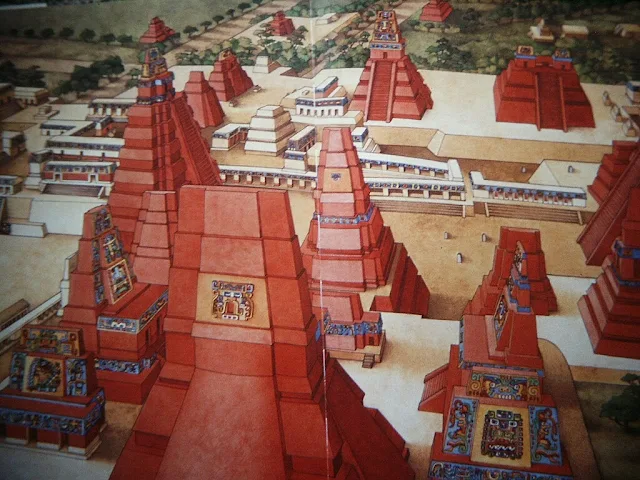Did Red Paint Poison the Maya Civilization?
The Maya Civilization built incredible cities—but could their passion for red paint have poisoned them? This post explores a striking theory behind their sudden fall.
Did Red Paint Poison the Maya Civilization?
The Maya Civilization suddenly disappeared around the 9th century. While drought, wars, and disease are commonly cited causes, recent research suggests that mercury poisoning from red paint may have played a critical role.
 |
| The red outline shows the Maya civilization ©Wikimedia Commons |
The Maya civilization thrived in Mesoamerica from around 2000 BC until the 17th century. It was known for its advancements in mathematics, architecture, art, astronomy, and calendar systems. They were the first to introduce the concept of zero, and their solar calendar was even more accurate than the Julian calendar.
What’s fascinating is that Maya cities were built with almost Stone Age-level tools, even though they had grand palaces, pyramids, observatories, and ball courts. They only started using metal around the 10th century, and even then, mostly for decorative items made of gold or silver.
People often say the Maya didn’t know how to make wheels, but that’s not true. They knew, but because they lived in tropical rainforests full of swamps, wheels weren’t practical for daily use. In fact, wheeled toys have been found.
A Civilization That Vanished Suddenly
While the Spanish conquest marked the final collapse of the Maya civilization, it had already started falling apart around 800 AD. People suddenly abandoned the cities for unknown reasons.
Why did this happen? Droughts, disease, massacres—many theories exist. But a more recent study draws attention to a different possibility: mercury poisoning caused by cinnabar (mercury sulfide).
The Maya had a tradition of human sacrifice to please their gods. They sacrificed war captives, slaves, virgins, children—even athletes who lost in their version of a ball game. The most well-known method was cutting out the heart.
A Bloody City Painted in Poison
Perhaps because of these beliefs, Maya buildings were painted in a vivid blood-red color. The pigment used was cinnabar, which is made of mercury sulfide.
Mercury sulfide is a toxic compound. It appears as a bright red crystal in nature and has been used as pigment since ancient times. But it’s dangerous—skin contact or inhalation can cause serious mercury poisoning. Symptoms include nerve damage, memory loss, depression, anxiety, headaches, and vision problems. Minamata disease is one known example of mercury poisoning.
 |
| Tikal reconstruction / Wikimedia |
If the Maya used cinnabar to paint their entire cities, that means they were constantly exposed to mercury. During the rainy season, the paint would have washed into groundwater. During dry seasons, the paint turned to dust and was likely inhaled.
Some researchers now believe this environmental factor played a major role in the civilization’s downfall.
Between 1970 and 2022, scientists studied 10 former Maya cities. In 7 of them, mercury levels exceeded modern safety standards (0.05 ppm). In Tikal, they found a shocking 17.16 ppm. Mercury was also found in the bones and teeth of buried Maya individuals, which suggests they had absorbed it during their lifetimes. Source: Kyunghyang Shinmun
There's a theory that China’s First Emperor, Qin Shi Huang, also died of mercury poisoning. He reportedly acted more erratic in his final years, and the 2016 excavation of his tomb revealed mercury channels and high mercury content in surrounding soil.Not Just the Maya
China's first emperor, Qin Shi Huang (3rd century BCE), is also believed to have died from mercury poisoning. Records mention his erratic behavior later in life. His tomb included mercury-filled rivers, and surrounding soil contained extremely high levels of mercury.
 |
| Old mercury thermometers contain liquid mercury, which is toxic if released. @wikimedia |
A Word of Caution
In Korea, traditional red pigment called "Gyeongmyeon Jusa" also contains mercury. Even today, mercury is still used in things like thermometers, batteries, catalysts, and dental fillings.
Mercury can be useful, but exposure is dangerous. If a mercury thermometer breaks, don’t use a broom or vacuum. Follow official mercury spill cleanup guidelines like this one.
Further Reading
Hosu (虎鬚): Tiger Whiskers and the Elegance of Joseon Military Attire
Comments
Post a Comment